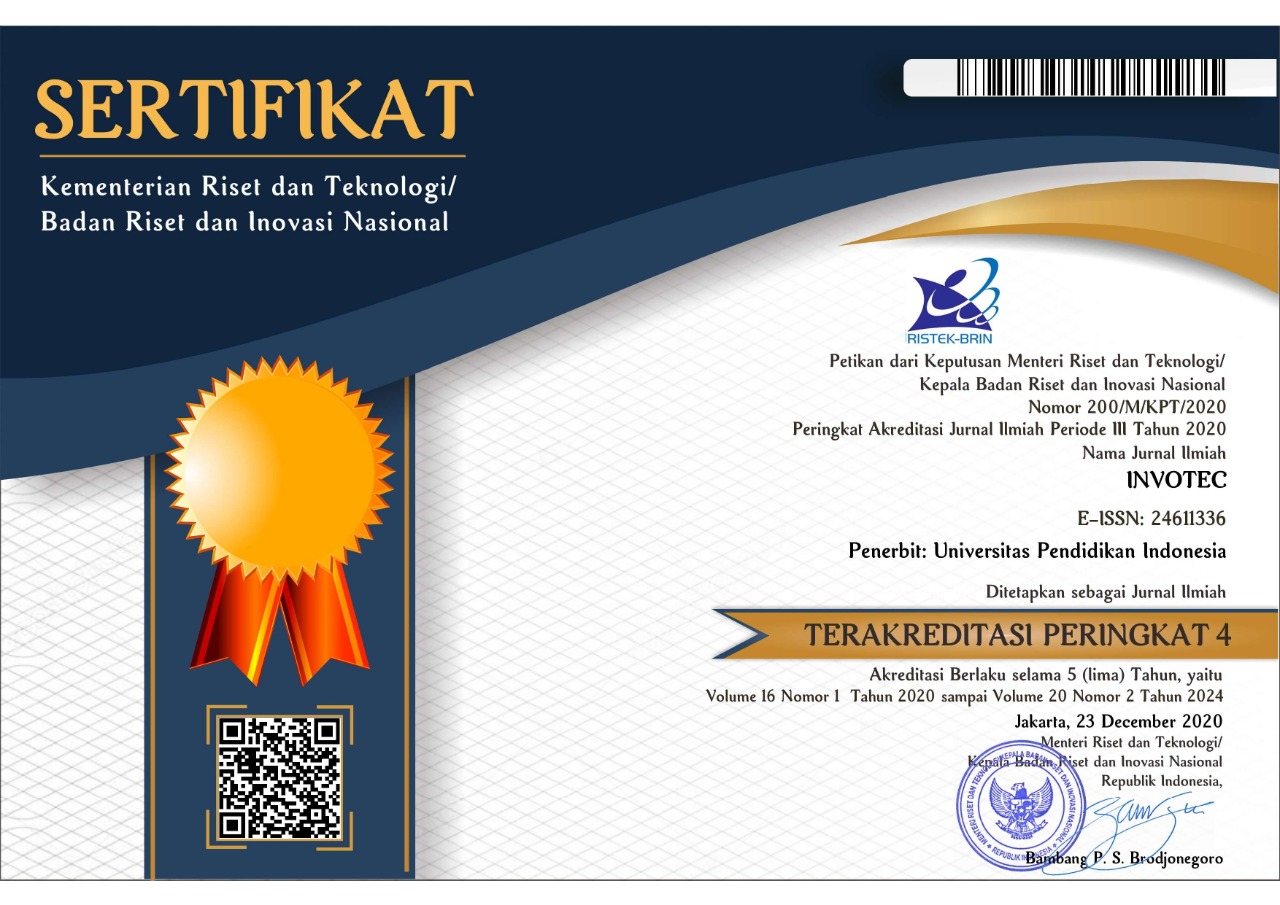Scientometric analysis of twenty years of research on school-to-work transition
Abstract
Full Text:
PDFReferences
Bakker, BFM, Van Rooijen, J., & Van Toor, L. (2014). The System of social statistical datasets of Statistics Netherlands: An integral approach to the production of register-based social statistics. Statistical Journal of the IAOS , 30 (4), 411–424. https://doi.org/10.3233/SJI-140803
Breen, R. (2005). Explaining cross-national variation in youth unemployment: Market and institutional factors. European Sociological Review , 21 (2), 125–134. https://doi.org/10.1093/esr/jci008
Bynner, J., & Parsons, S. (2002). Social exclusion and the transition from school to work: The case of young people not in education, employment, or training (NEET). Journal of Vocational Behavior , 60 (2), 289–309. https://doi.org/10.1006/jvbe.2001.1868
Care, I., Mellin, EA, Bronstein, L., Anderson-butcher, D., Amorose, AJ, Ball, A., & Green, J. (2010). Measuring interprofessional team collaboration in expanded school mental health: Model refinement and scale development . 24 (September), 514–523. https://doi.org/10.3109/13561821003624622
Caroleo, FE, Rocca, A., Mazzocchi, P., & Quintano, C. (2020). Being NEET in Europe Before and After the Economic Crisis: An Analysis of the Micro and Macro Determinants. In Social Indicators Research (Vol. 149, Issue 3). Springer Netherlands. https://doi.org/10.1007/s11205-020-02270-6
Coles B Godfrey, C. (2010). Estimating the life-time cost of NEET: 16-18 year olds not in Education, Employment or Training Research Undertaken for the Audit Commission. Department of Social Policy and Social Work and Department of Health SciencesDepartment of Health Sciences , 16–18. http://www.york.ac.uk/media/spsw/documents/research-and-publications/NEET_Final_Report_July_2010_York.pdf
Contini, D., Filandri, M., & Pacelli, L. (2019). Persistency in the NEET state : a longitudinal analysis Persistency in the NEET state : a longitudinal analysis . 6261 . https://doi.org/10.1080/13676261.2018.1562161
Fenton, S. (2006). Fragmented careers? Winners and losers in young adult labor markets . 20 (2), 205–221. https://doi.org/10.1177/0950017006064111
Furlong, A. (2006). Not a very NEET solution: Representing problematic labor market transitions among early school-leavers. Work, Employment and Society , 20 (3), 553–569. https://doi.org/10.1177/0950017006067001
Gargiulo, A., & Margherita, G. (2019). of Clinical Phychology . 7 , 1–19.
Gesthuizen, M., Solga, H., & Ku, R. (2011). Context Matters: Economic Marginalization of Low-Educated Workers in Cross-National Perspective . 27 (2), 264–280. https://doi.org/10.1093/esr/jcq006
Ghignoni, E., Croce, G., Ambrosio, A., Ghignoni, E., Croce, G., & Ambrosio, A. (2019). University dropouts vs high school graduates in the school-to-work transition Who is doing better ? https://doi.org/10.1108/IJM-02-2018-0051
Golizadeh, H., Hosseini, MR, Martek, I., Edwards, D., Gheisari, M., Banihashemi, S., & Zhang, J. (2020). Scientometric analysis of research on “remotely piloted aircraft”: A research agenda for the construction industry. Engineering, Construction and Architectural Management , 27 (3), 634–657. https://doi.org/10.1108/ECAM-02-2019-0103
ISTAT. (2010). Occupati e disoccupati IV trimester 2009 .
Koen, J., Klehe, UC, & Van Vianen, AEM (2012). Training career adaptability to facilitate a successful school-to-work transition. Journal of Vocational Behavior , 81 (3), 395–408. https://doi.org/10.1016/j.jvb.2012.10.003
Levels, M., Brzinsky-Fay, C., Holmes, C., Jongbloed, J., & Taki, H. (2022). Not in Employment, Education, or Training around the World. In The Dynamics of Marginalized Youth . Routledge. https://doi.org/10.4324/9781003096658-1
Luca, G. De, Mazzocchi, P., Quintano, C., & Rocca, A. (2019). Italian NEETs in 2005 – 2016 : have the Recent Labor Market Reforms Produced Any Effect ? 1–23. https://doi.org/10.1093/cesifo/ifz004
No, IZADP, Pastore, F., & Pastore, F. (2017). DISCUSSION PAPER SERIES Why So Slow ? The School-to-Work Transition in Italy Why So Slow ? The School-to-Work Transition in Italy . 10767 .
O'Higgins Niall, D'Amato Marcello. Caroleo Floro, BA (2007). Gone for Good ? Determinants of School Dropout in Southern Italy IZA DP No . 3292 Gone for Good ? Determinants of School Dropout in Southern Italy Niall O ' Higgins Marcello D ' Amato Floro Ernesto Caroleo Adriana Barone Institute for the Study of Labor . May 2014 .
Parola, A. (2020). Mediterranean Journal of Clinical Psychology . https://doi.org/10.6092/2282-1619/mjcp-2421
Pastore, F. (2020). Stuck at a crossroads ? The duration of the Italian school-to-work transition Stuck at a Crossroads ? The Duration of the Italian School-To-Work Transition . September . https://doi.org/10.1108/IJM-05-2020-0199
Perspective, AC, Freeman, RB, Wise, A., & Rees, A. (2001). The School-to-Work Transition : XXXIX (March), 34–92.
Quintini, G., Martin, JP, & Martin, S. (2021). The Changing Nature of the School-to-Work Transition Process in OECD Countries. SSRN Electronic Journal , 2582 . https://doi.org/10.2139/ssrn.964927
Sánchez, AD, de la Cruz Del Río Rama, M., & García, J. . (2017). Bibliometric analysis of publications on wine tourism in the databases Scopus and WoS. European Research on Management and Business Economics , 23 (1), 8–15. https://doi.org/10.1016/j.iedeen.2016.02.001
Simmons, R., Thompson, R., & Russell, L. (2014). Young People Not in Education, Employment or Training. Education, Work and Social Change , 39–65. https://doi.org/10.1057/9781137335944_3
Solga, H. (2002). ' Stigmatization by Negative Selection ' Explaining Less-Educated People's Decreasing Employment . 18 (2), 159–178.
Struffolino, E., & Borgna, C. (2021). Who is really 'left behind'? Half a century of gender differences in the school-to-work transitions of low-educated youth. Journal of Youth Studies , 24 (2), 162–185. https://doi.org/10.1080/13676261.2020.1713308
Thomàs-vanrell, C., Salvà-mut, F., Thomás-vanrell, C., Quintana-murci, E., Thomás-vanrell, C., & Quintana-murci, E. (2015). School-to-work transitions in times of crisis : the case of Spanish youth School-to-work transitions in times of crisis : the case of Spanish youth without qualifications . April 2018 . https://doi.org/10.1080/13676261.2015.1098768
Vries, MR De, & Wolbers, MHJ (2005). Non-standard employment relations and wages among school leavers in the Netherlands . February . https://doi.org/10.1177/095001705055668
DOI: https://doi.org/10.17509/invotec.v19i1.66439
Refbacks
- There are currently no refbacks.
Copyright (c) 2024 INVOTEC

This work is licensed under a Creative Commons Attribution-ShareAlike 4.0 International License.
This journal provides immediate open access to its content on the principle that making research freely available to the public supports a greater global exchange of knowledge.

This work is licensed under a Lisensi Creative Commons Atribusi-BerbagiSerupa 4.0 Internasional.




